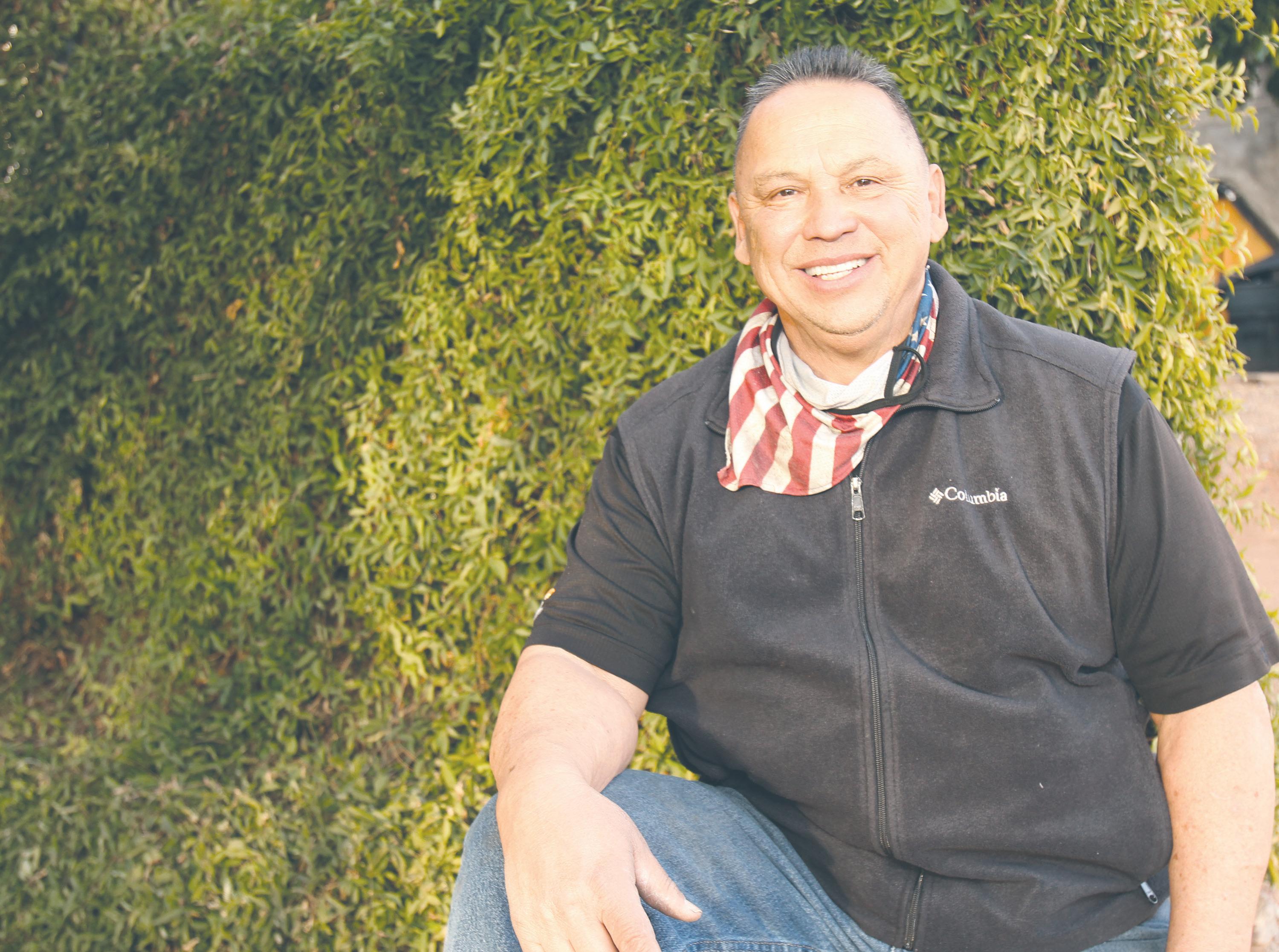
8 minute read
Aftermath of the Cambrian Explosion
February 2021 7 Aftermath of the Cambrian Explosion
BY JOHN TRIMBLE
Our last time travel trail took us up Gerald Wash to Dago Springs, where we visited with a trace fossil in the Mescal Limestone. This time travel trail will take us to another limestone, but well after the time of the Precambrian tube worm last visited. We are going to a time when life has exploded into nearly all the types (phylum) that live today. It has moved from marine life only and onto the land, which is now covered with forests where giant insects roam that will create the coal that gave this age its name, the Carboniferous age.
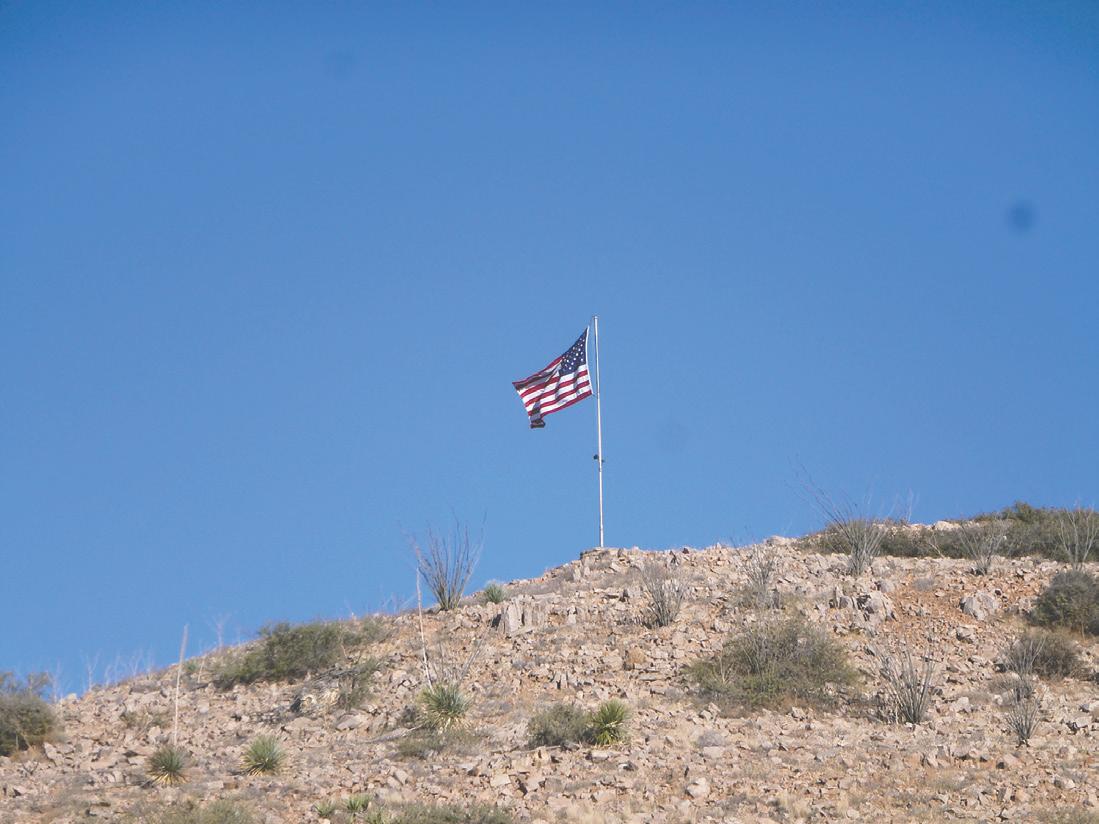
Round Mountain from high end start of East Trail Loop
Yes, Nellie, we will take just a few steps down this East Trail and look for the grey rocks.
Earth Timeline with Life Forms
Our trip starts at a well-known local hiking destination, Round Mountain Park, which is located at the end of South St. from Highway 60. Round Mountain is home to five different hiking loops. Our time travel trail is on the East Loop. This will be to the right as you enter the park. Note that the parking lot has been cut into the Gila Conglomerate, which is the rock formation that surrounds Globe City. The Gila Conglomerate is formed from an accumulation of debris from all the older rock types in the region. These fragments were deposited in a broad valley by transient floods and intermittent streams, with some fragments rounded by tumbling during transport. So just stepping out of the car, we have travelled back to the early Pleistocene, which is the age of the mammal.
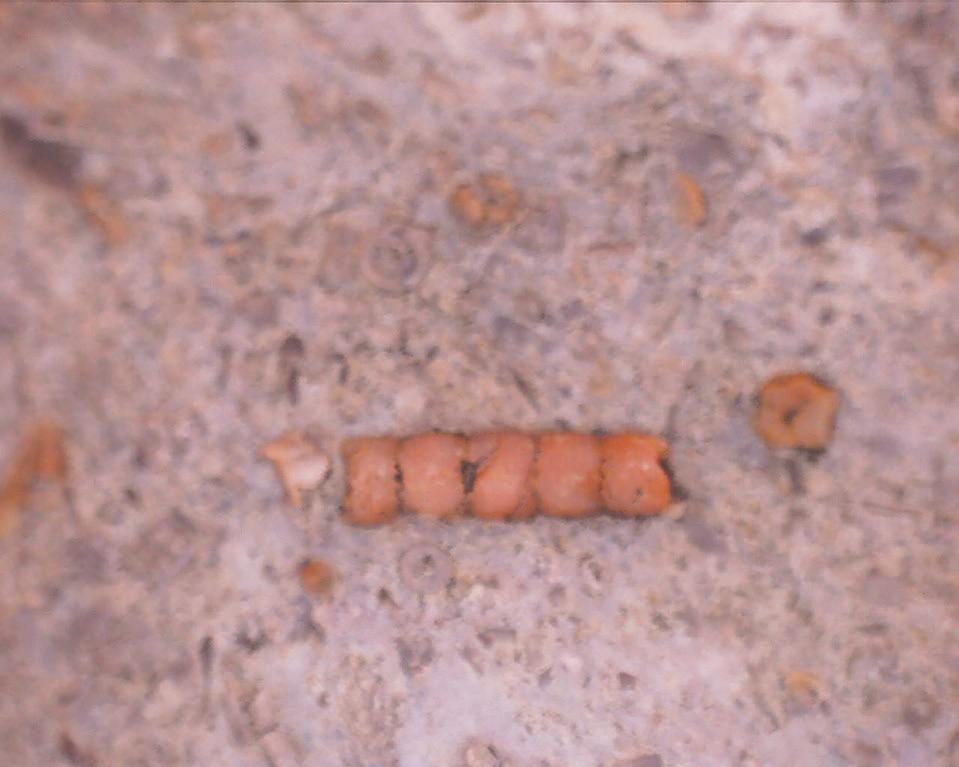
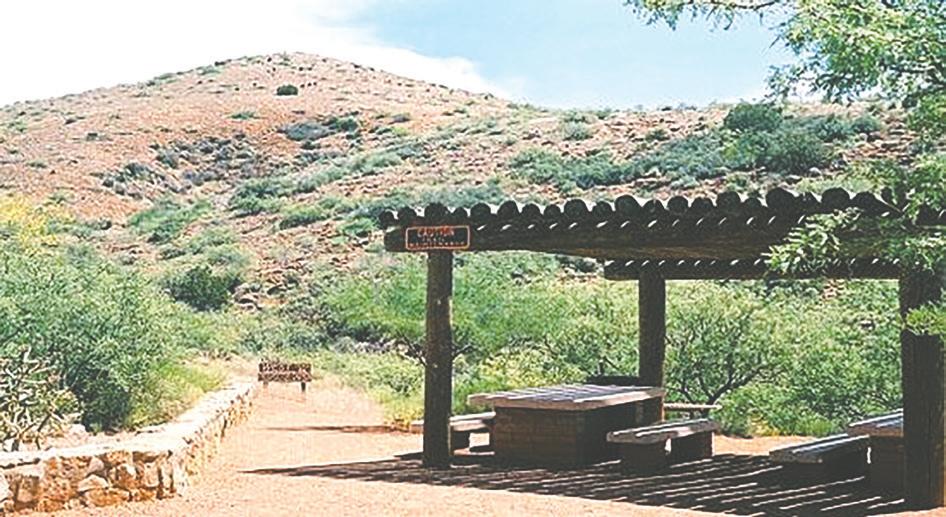
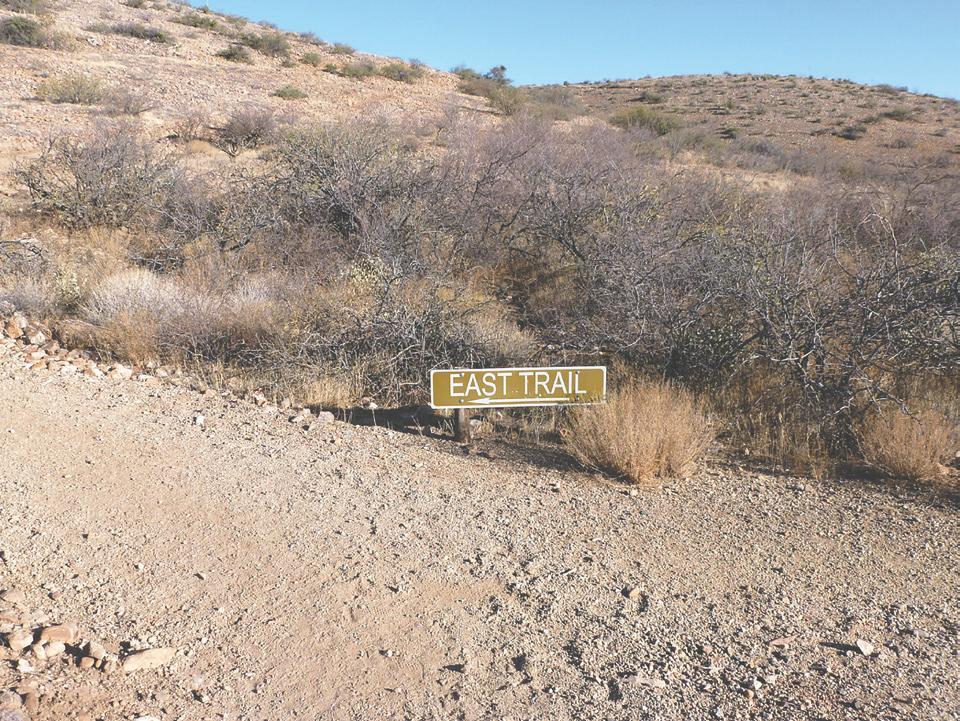
Round Mountain Park
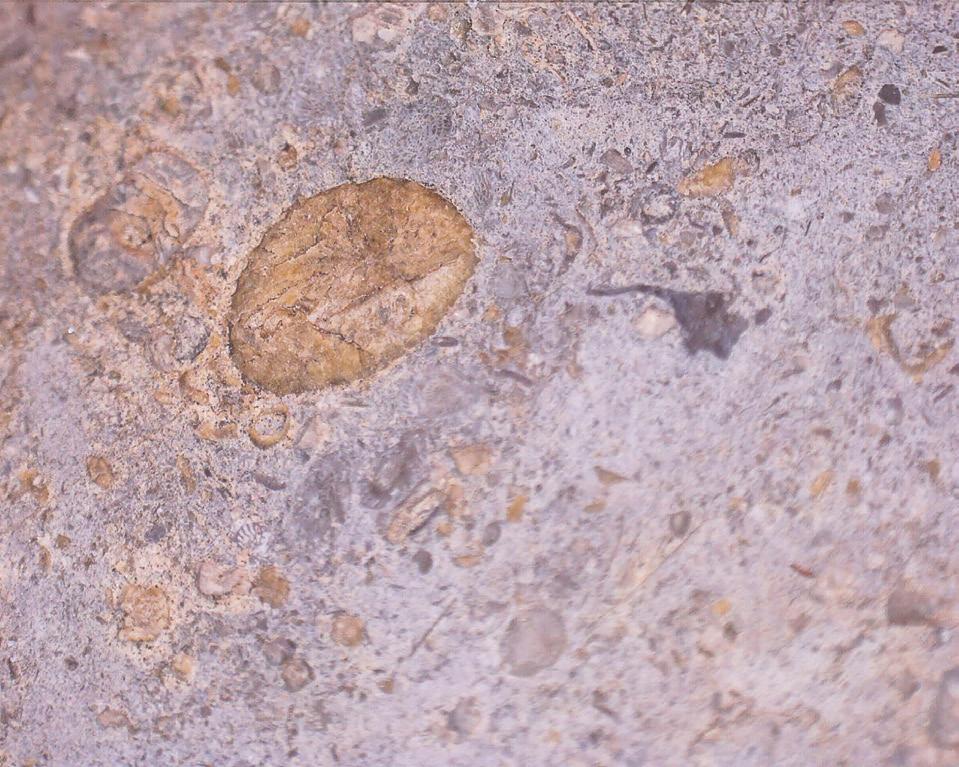
Starting down the East Loop, we cross a small fault block of Tertiary dacite, a fine-grained igneous rocks, and then into an extensive fault block of the Cambrian age formation, the Troy Quartzite. This would be the time of the Cambrian explosion of life, but the Troy Quartzite might have been formed from a barren desert, as not a sign of life can be found in it, just a few thin bands with pebbles. This area is faulted up and down, which makes our time travel erratic as we cross faults, but is great for injecting mineralizing fluids. So be sure to look for iron stains (various shades of red and purple) and manganese staining (black), which is how the old prospectors located ore zones – they called it “iron cap”. You can prowl around just north of Round Mountain and explore along the Albert Lea vein, which contains silver, lead, manganese and vanadinite coating.
But putting our prospecting aside, we are still looking for signs of life, so we hunt for a marine sedimentary rock and are just passing through the Troy Quartzite and bits of dacite igneous blocks on our way up the trail and over the pass.

Are we there yet Dad?
Yes, Nellie, we are now within a few steps of the Escabrosa Limestone, which has lots and lots of fossils.
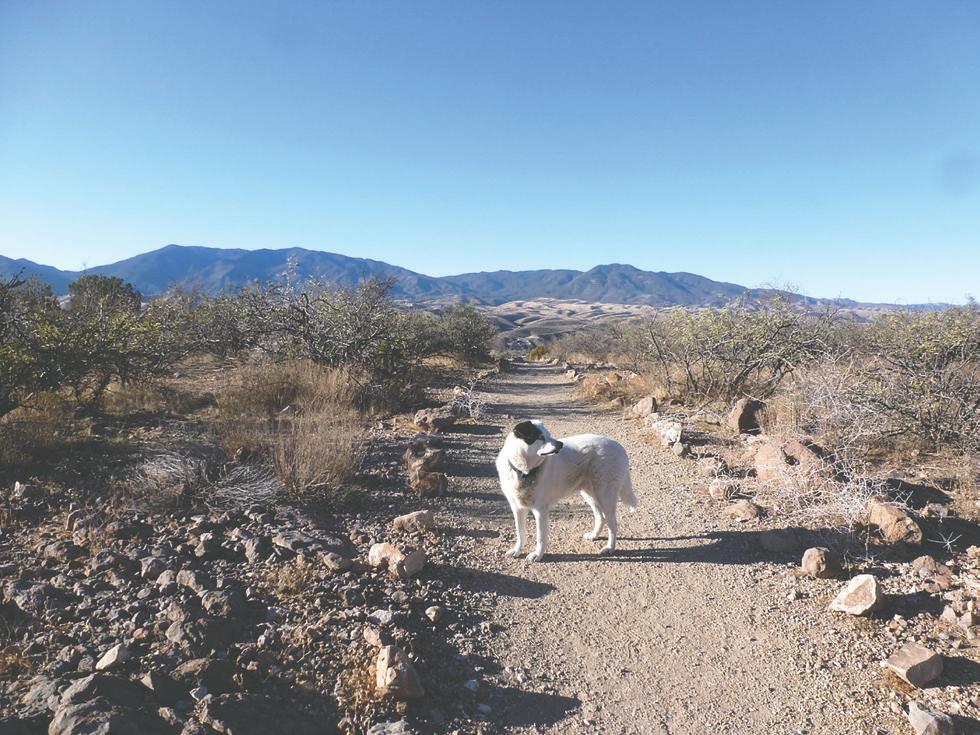
Limestone float showing a mixture of crinoids & brachiopods.
East Trail
I started counting my steps to the limestone from the East Trail sign. I could see the grey rocks (limestone) on the hill below as it outcropped and trended off to the northeast. As I went down the trail after about 10 paces I noticed that I had crossed another major fault and was now standing on limestone outcrops, with just a coating of quartzite float rocks weathering down from Round Mountain obscuring them. Float is what a geologist calls a loose rock that has weathered loose from its formation and washed downhill, floated, which means you can’t trust it to tell what formation you are standing on.
Microscopic views of Crinoid
View is along a horizontal section of a crinoid stem with an end view of a crinoid segment just to its right.
Sweetheart of a Fossil
Several brachiopods with different angles exposed. Heart shape is edge view of both valves of a brachiopod. Possibly a variety of Spiriferidea.
Microscopic View of Fossil Hash
View shows crinoids, fusilids, arthropod jaw (black object with a tail- like extension), brachiopod fragments and sponge spiricles.
As we stepped across the fault zone, we traveled into deep time on the east trail from Round Mountain. We are now in the Mississippian Age, standing on sediments from a warm, shallow sea. Life is abundant but not as mellow as when the tube worms were grazing on algae at our last trail. Arthropods, corals, bryozoa, crinoids, and mollusks flourish in the warm, shallow seas. Echinoderms, especially Crinoids, were extremely numerous. It is still the time of the filter feeders, but now they are armored to protect themselves from roaming predator arthropods, fishes and cephalopods. The trilobite has almost died out, and we see none of them here, but numerous predators roam this sea.
Predator of the Sky
It is important to remember that this outcrop is part of a park that we all share, even the hawk giving us a watchful eye. So please take only pictures and leave only footprints. There are lots of outcrops of the Escabrosa in Gila County on Federal land, where it is legal to collect invertebrate fossils, and we will visit this Paleozoic time on another time travel trail again as we continue our hunt for a quality specimen of the solitary coral Rugosa, who has been known to frequent these parts.
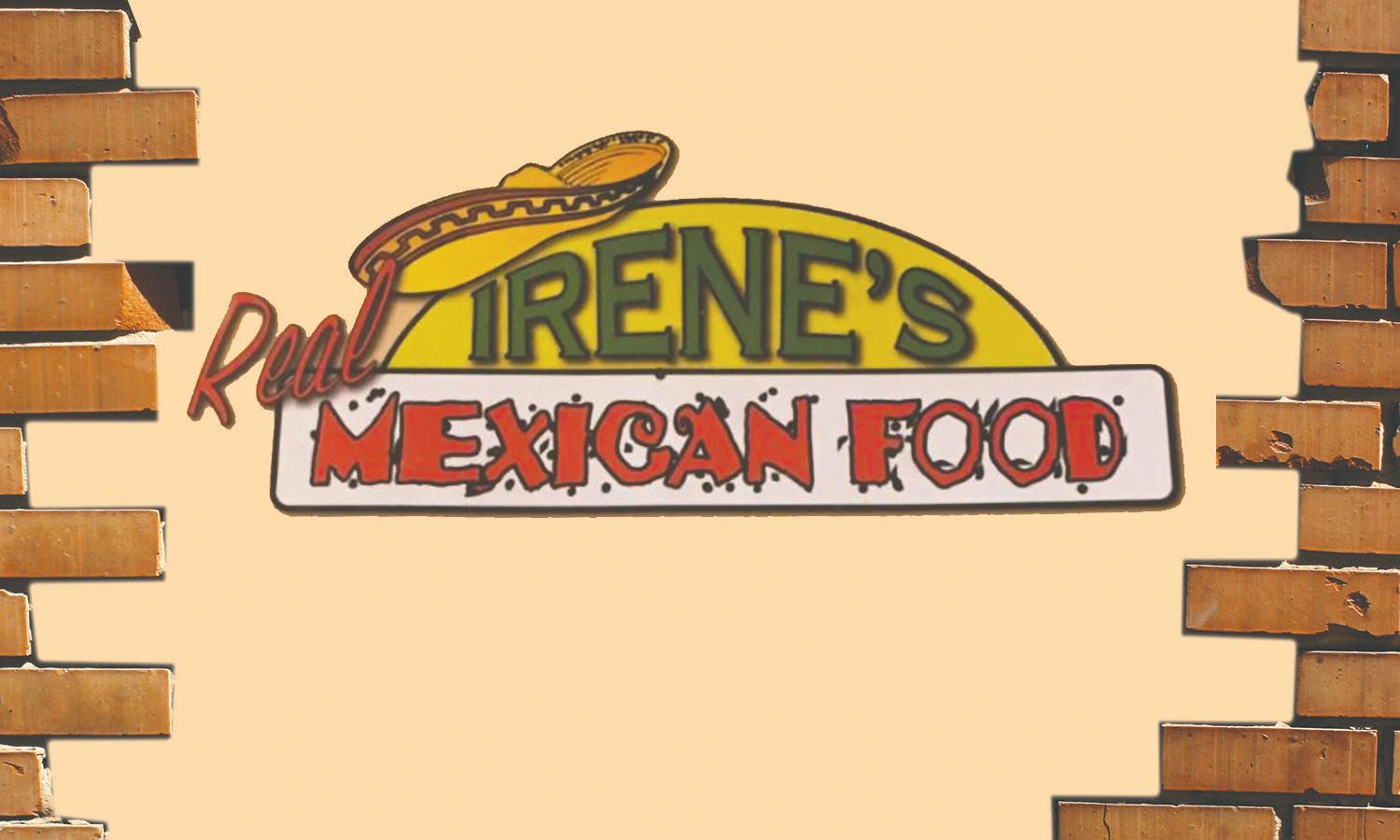

Buy • Sell • Trade Firearms
Class 3 Dealer
AZ Game & Fish Dealer Optics and Accessories
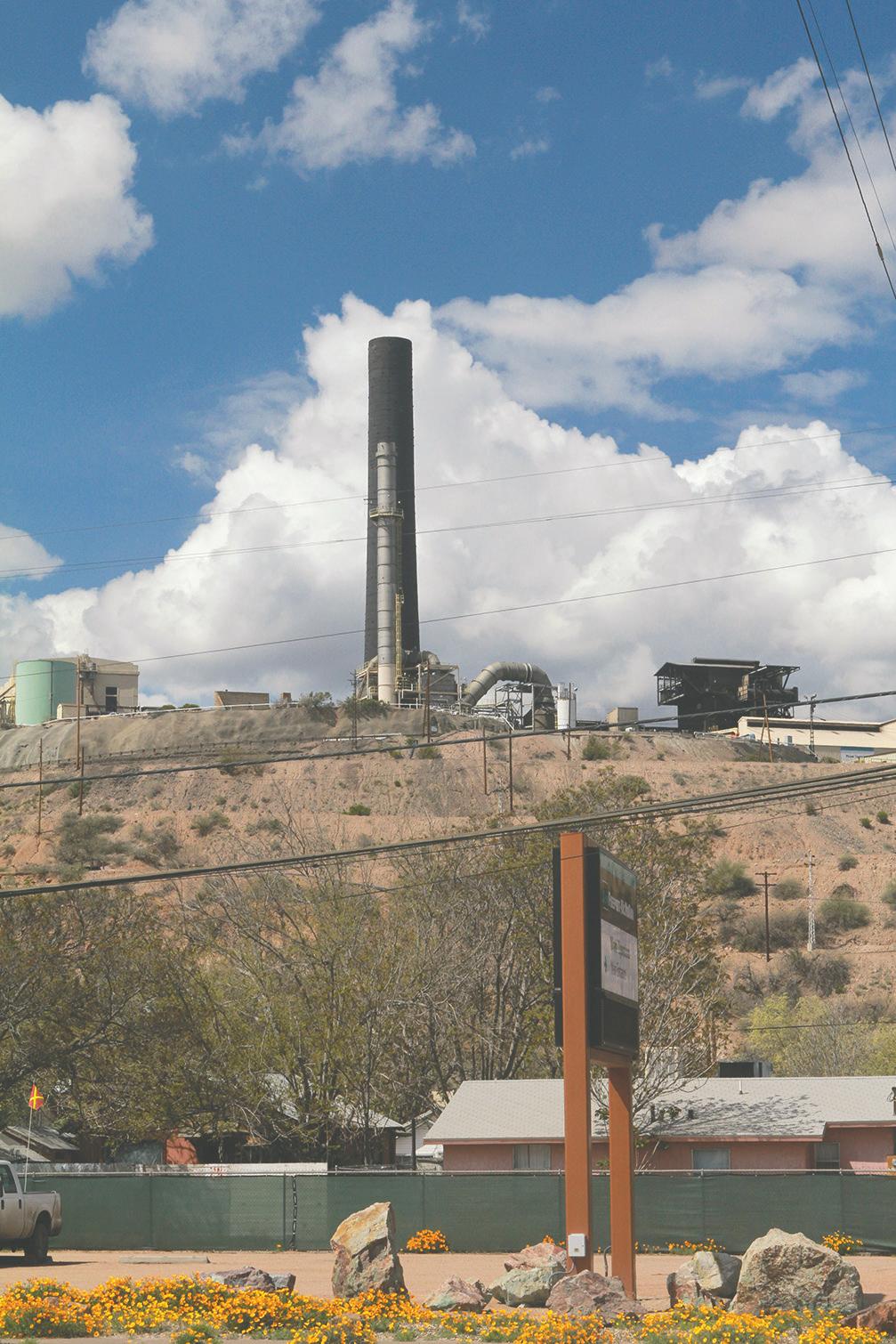
Proliferation of poppies has been helped along by various civic groups who have seeded the areas along Highway 60. Photo by LCGross
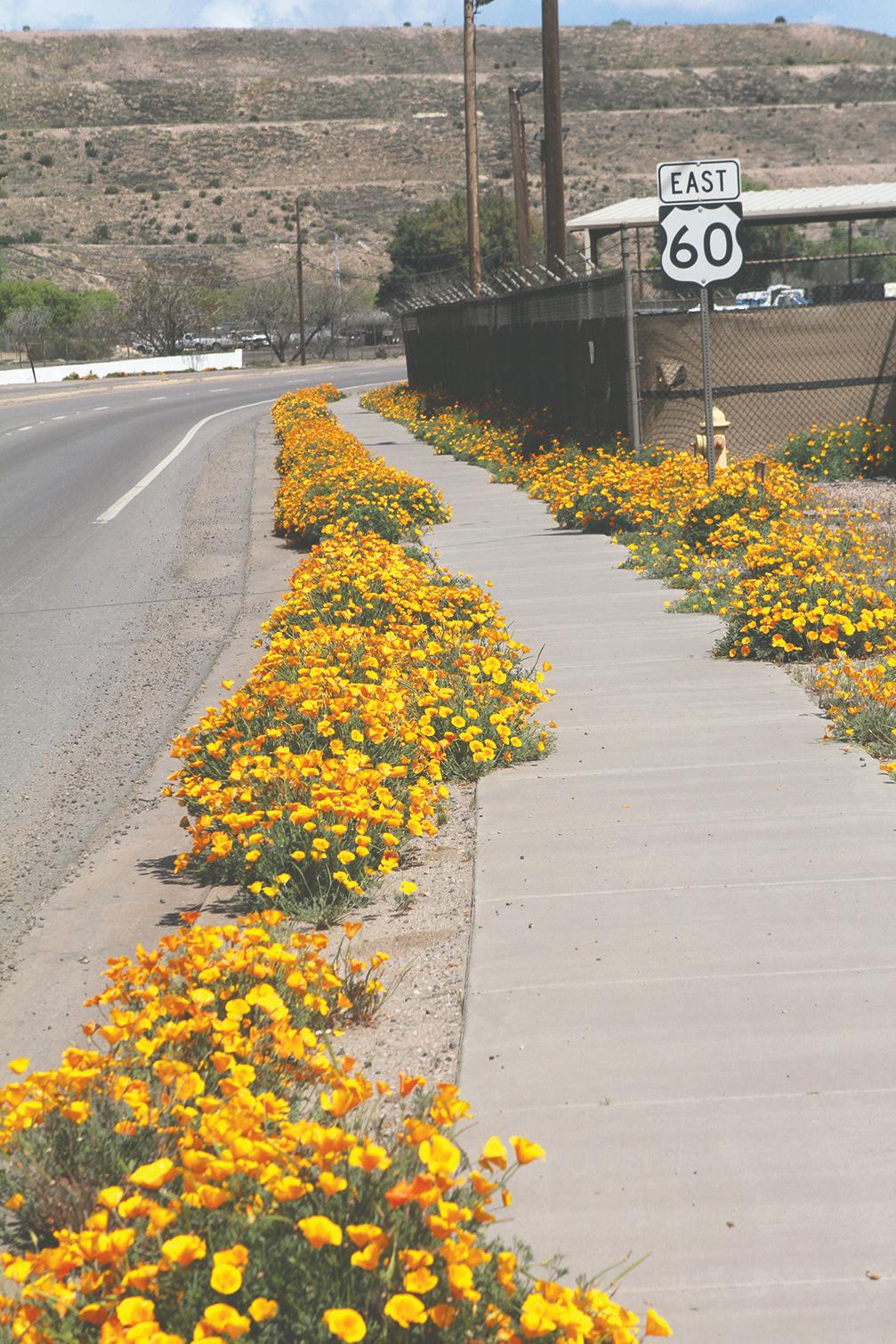

Thea Wilshire helping to scatter poppy waste around the playground in an effort to beautify the hillsides with recycled seeds that were headed to the landfill. | Courtesy Photo With the recent rain in February reviving an otherwise dry winter, hopes are high this year for another good showing of poppies throughout our region. Photographers of all levels, from novices to professionals, trek to Globe-Miami to capture the beauty.


Poppies, Continued from page 1
Their proliferation throughout our community each spring has drawn photographers and visitors alike to capture the beauty of hills blanketed in orange and yellow poppies.
They have been helped along by human hands over the decades. In the 60s the local Girl Scouts planted seeds along Highway 60, and various civic organizations got involved in seeding small areas throughout the community.
In 2017, a creative idea to seed our local parks with recycled “poppy clippings” was led by Paul Wolterbeek, a county employee and poppy enthusiast. He had watched as ADOT would trim the overgrowth of poppies lining the sidewalks along the highway. The clippings usually ended up at the landfill, but Paul wondered if they could be spread over the parks, where they might be used to seed the area.
He worked with ADOT, Gila County, the City of Globe and the Department of Corrections to get nearly 1000 pounds of clippings donated to the parks.
At the time, no one was sure that the experiment would work because the poppies were cut before they had dried up. The proof came a year later when the first blooms started to appear on hillsides.
Tianna Holder, Director of the Globe Miami Chamber, says that after having to cancel so many events in the last 12 months due to the pandemic, she and the Board wanted to have an event which could bring visitors to our community while still meeting the concerns everyone has with COVID still at large.
She is working with the City of Globe, the San Carlos Apache Tribe and Tonto National Monument as well as local businesses in organizing the three day event.
The Festival will include poppy-viewing locations in Roosevelt, Globe-Miami and San Carlos (pending due to COVID), as well as guided hikes to the old Globe Cemetery to catch some local history, a kids zone with COVID-19 safe activities, poppy seeds from the Gila County Historical Museum, performances by Power Elite Dance Academy and more. As we went to press more was being added, so please check out their website at: www.azpoppyfest.com for the latest information, or call the Globe-Miami Chamber at 928-425-4495. u
For those wishing to capture the beauty of these striking flowers without hiking into the hills, there are plenty of places like these which just require a park and stop. | Photo by LCGross
Paul Wolterbeek shows what was salvaged and scattered along the hillsides. He has a little under 100 pounds of waste in these 2 bags, and over 1,000 pounds were salvaged. | Courtesy Photo
Now Open!
Slavic History Exhibit • Mexican Heritage Room Rose Mofford Room • Mining & Mineral Display • Military Exhibit Ranching History • The McKusick Tile Exhibit Native American Heritage Exhibit







